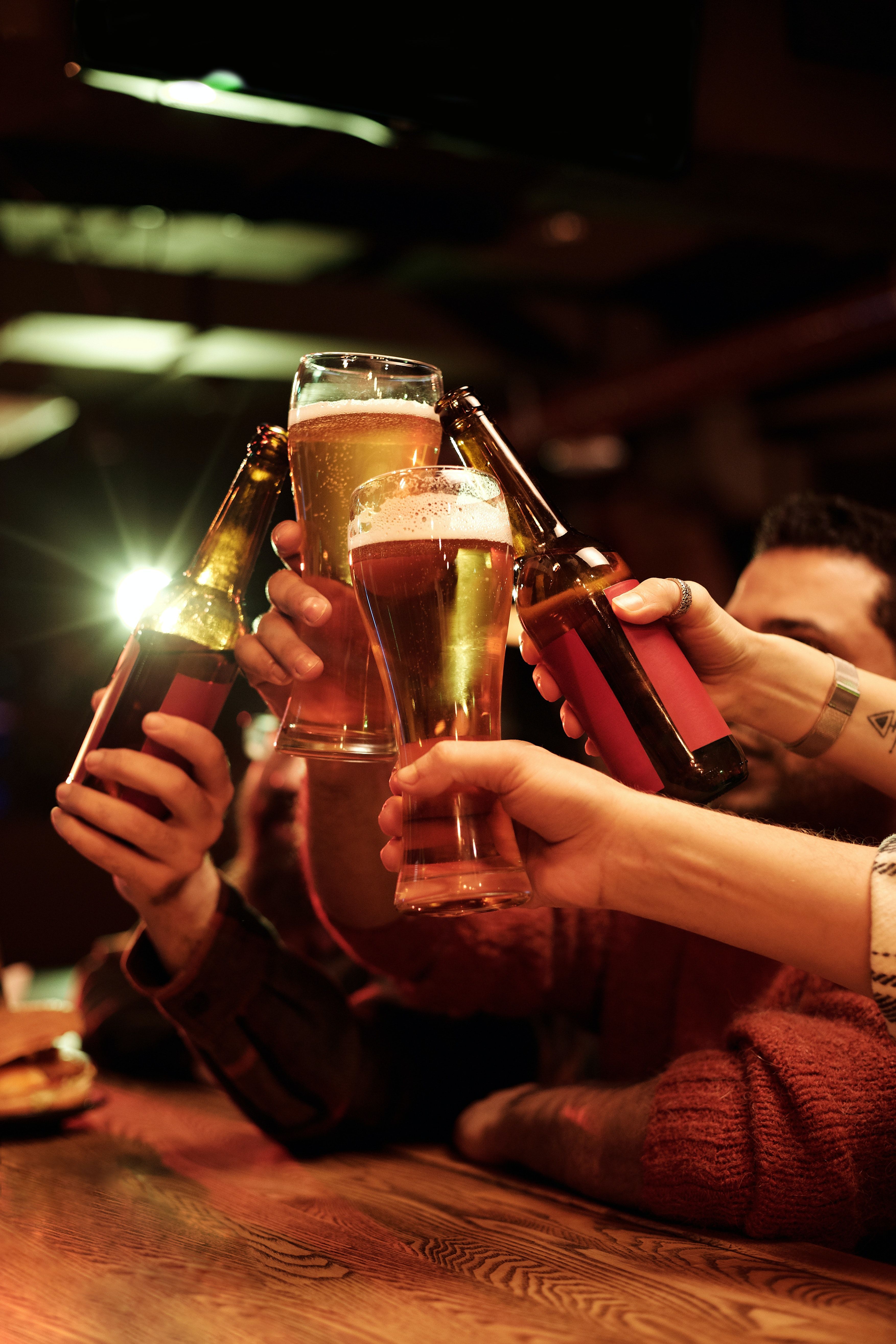Cheers For Beer: The Ultimate Guide To Celebrating Life With A Cold Brew
Beer is not just a drink; it's a universal language that brings people together. From ancient civilizations to modern-day celebrations, beer has played a pivotal role in shaping cultures and traditions worldwide. Whether you're enjoying a cold pint with friends or sipping on a craft brew at your favorite pub, beer continues to be an integral part of social gatherings.
Cheers for beer is more than just a phrase; it's a celebration of camaraderie, relaxation, and shared moments. This article dives deep into the world of beer, exploring its rich history, varieties, brewing process, health benefits, and much more. Whether you're a seasoned beer enthusiast or just starting your journey, this guide will provide valuable insights and tips to enhance your beer-drinking experience.
As we raise our glasses in a toast, let's explore why beer has stood the test of time and remains one of the most beloved beverages across the globe. From its humble beginnings to its current status as a cultural icon, beer continues to evolve while staying true to its roots.
Read also:Exploring Ashton Kutchers Hometown A Journey Through His Roots
Table of Contents
- The Fascinating History of Beer
- Types of Beer: A World of Flavors
- The Art and Science of Brewing Beer
- Health Benefits and Risks of Beer Consumption
- Food Pairing Tips for Beer Lovers
- The Cultural Significance of Beer
- Global Beer Consumption Statistics
- Beer Etiquette: Dos and Don'ts
- The Rise of Craft Beer
- The Future of Beer
The Fascinating History of Beer
Beer has been around for thousands of years, with evidence of its existence dating back to ancient Mesopotamia around 4,000 BCE. The Sumerians are often credited with creating the first beer recipes, which were inscribed on clay tablets. These early brews were made using barley bread and were considered a staple food in their diet.
In ancient Egypt, beer played a crucial role in daily life, serving as payment for workers and a source of hydration. The beverage was also used in religious ceremonies and as an offering to the gods. As civilizations advanced, so did the brewing techniques, leading to the development of various beer styles.
Beer in Medieval Europe
During the Middle Ages, monasteries became the center of beer production in Europe. Monks refined brewing methods and introduced hops as a preservative and flavoring agent. This innovation laid the foundation for modern beer as we know it today.
Types of Beer: A World of Flavors
The world of beer is incredibly diverse, offering a wide range of flavors and styles to suit every palate. From light and refreshing lagers to rich and complex stouts, there's a beer for every occasion and preference.
Read also:Discovering Excellence A Comprehensive Guide To Temecula Valley High School
Popular Beer Styles
- Ale: Fermented with top-fermenting yeast at warmer temperatures, ales are known for their fruity and robust flavors.
- Lager: Brewed with bottom-fermenting yeast at cooler temperatures, lagers are crisp and clean, making them perfect for casual drinking.
- Stout: Dark and full-bodied, stouts are characterized by their roasted malt flavors and creamy texture.
- IPA (India Pale Ale): Known for its hoppy bitterness and aromatic qualities, IPAs have gained immense popularity in recent years.
The Art and Science of Brewing Beer
Brewing beer is a complex process that combines artistry and science to create a delicious beverage. From selecting the right ingredients to perfecting the fermentation process, every step plays a crucial role in determining the final product's taste and quality.
Key Steps in the Brewing Process
- Mashing: Grains are soaked in hot water to convert starches into fermentable sugars.
- Boiling: The liquid, known as wort, is boiled to sterilize it and allow for the addition of hops.
- Fermentation: Yeast is added to the cooled wort, converting sugars into alcohol and carbon dioxide.
- The beer is aged to allow flavors to mature and develop.
Modern brewing techniques have advanced significantly, allowing brewers to experiment with new ingredients and flavors while maintaining traditional methods.
Health Benefits and Risks of Beer Consumption
While beer is often associated with socializing and relaxation, it also offers several health benefits when consumed in moderation. Studies have shown that moderate beer consumption can improve heart health, strengthen bones, and reduce the risk of kidney stones.
However, excessive beer drinking can lead to negative health effects, including liver damage, weight gain, and an increased risk of certain cancers. It's essential to strike a balance and enjoy beer responsibly.
According to the National Institute on Alcohol Abuse and Alcoholism, moderate drinking is defined as up to one drink per day for women and up to two drinks per day for men.
Food Pairing Tips for Beer Lovers
Pairing beer with food can elevate your dining experience, creating harmonious flavor combinations that enhance both the meal and the beverage. Here are some tips to help you make the perfect match:
- Pair light beers, such as lagers and pilsners, with seafood, salads, and grilled chicken.
- Choose ales and IPAs to complement spicy dishes, barbecue, and rich cheeses.
- Enjoy stouts and porters with desserts, chocolate, and roasted meats.
Experimenting with different pairings can be a fun and rewarding experience, allowing you to discover new flavor combinations and expand your palate.
The Cultural Significance of Beer
Beer has played a significant role in shaping cultures and traditions around the world. From Oktoberfest in Germany to beer festivals in the United States, beer is a unifying force that brings people together in celebration.
In many societies, beer is more than just a drink; it's a symbol of friendship, community, and shared experiences. Whether it's a casual get-together with friends or a grand celebration, beer has the power to create lasting memories and foster connections.
Beer Festivals Around the World
- Oktoberfest (Germany)
- Great American Beer Festival (USA)
- Cheers Festival (Thailand)
- Beer Festival Tokyo (Japan)
Global Beer Consumption Statistics
Beer is one of the most popular alcoholic beverages worldwide, with millions of liters consumed annually. According to Statista, global beer consumption reached approximately 188 billion liters in 2021, with countries like China, the United States, and Brazil leading the way in terms of volume.
Interestingly, per capita beer consumption varies significantly across regions, with countries like the Czech Republic and Austria ranking highest. These statistics highlight the universal appeal of beer and its enduring popularity.
Beer Etiquette: Dos and Don'ts
When enjoying beer, it's important to follow proper etiquette to ensure a pleasant experience for everyone involved. Here are some dos and don'ts to keep in mind:
- Do: Pour beer into a clean glass to release its aromas and flavors.
- Do: Raise a toast before taking your first sip as a sign of respect and camaraderie.
- Don't: Overfill your glass, as this can prevent the formation of a proper head.
- Don't: Drink directly from the bottle unless it's a specific style that requires it.
Following these guidelines will help you enjoy beer in a respectful and socially acceptable manner.
The Rise of Craft Beer
In recent years, the craft beer movement has gained significant momentum, with small breweries and independent producers gaining popularity worldwide. This trend is driven by consumers' desire for unique, high-quality beers that offer distinct flavors and experiences.
Craft brewers often experiment with unconventional ingredients and techniques, pushing the boundaries of traditional brewing methods. This innovation has led to the creation of exciting new beer styles and flavors, catering to diverse tastes and preferences.
The Future of Beer
As technology continues to advance, the future of beer looks promising, with innovations in brewing techniques, sustainability practices, and consumer preferences shaping the industry. From eco-friendly packaging to low-alcohol and non-alcoholic options, brewers are responding to changing demands and priorities.
Additionally, the globalization of beer culture has opened up new opportunities for collaboration and exchange, allowing brewers from different regions to share knowledge and techniques. This cross-cultural exchange will undoubtedly lead to exciting developments in the world of beer.
Conclusion
In conclusion, beer is much more than just a beverage; it's a cultural phenomenon that brings people together and enhances shared experiences. From its rich history to its diverse varieties and brewing techniques, beer continues to evolve while maintaining its timeless appeal.
We encourage you to explore the world of beer, try new styles, and share your experiences with others. Don't forget to leave a comment below or share this article with your friends and fellow beer enthusiasts. Cheers for beer!


